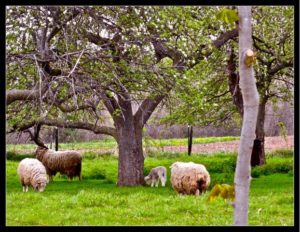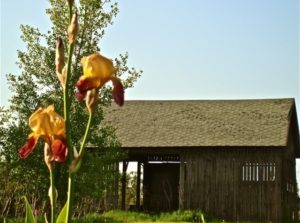Happy Wednesday TSJ Friends,
OUR STORY . . . AND YOURS
“Human being is more of a verb than a noun.
Each of us is unfinished, a work in progress.” Rachel Remen*
This is a tale of houses and humans. It is also a story about us and about you. Mr. John has also contributed and our TSJ muse, Solomon, has given it his approval.
“Each of us is unfinished.”
Often just when we think life is moving along in the right direction something happens to challenge us and change us. It can seemingly be minor or it can be major, but change and challenge seem to be certain for us human beings. We are always in process. We are animate creations and creators.
About five and a half years ago, the death of our late beloved spouses plunged “Mr. John” (as Solomon calls him) and me (individually and later, together) into a period of profound change. Grief brings uncertainty and confusion. Grief changed the inner landscape of our hearts and minds. It also changed our external structures from habits to dwelling places.
Currently, the whole world is in varying stages of grief due to the coronavirus pandemic. We seek the familiar as we undergo reconstruction and re-formation of our lives.
For many, hopes and dreams have been squelched or shattered. Moving forward and facing the future feels more like wading in molasses than surfing the waves. Discouragement blurs vision and sometimes becomes an insidious weapon of darkness. We get worn down and worn out easily. Things pile up, and we have less than normal energy to keep our heads held high. Our houses and our minds become cluttered with unfinished projects.
And YET! … there is hope because the truth is, we are simply unfinished! We are still humans – being human. We are “works in progress” and all of life is more of a process than a product.
We can learn the truth of one little word “yet.”
Or two words…”not yet.”
Once, in session with one of my coaches, when I reported failure or discouragement, she would not let me say, “I am not good at …. “ unless I added the word “yet.” I think of this often. And it helps.
Often we feel unhappy we are “here” when we want to be “there.” But it helps to remember we are simply not “there – yet.”
We just must be here first.
Mr. John and I have watched this process in ourselves and our community.
OUR STORY
It has been three years plus that John and I met and married and began blending our lives and stories together. Being in our seventies meant we had a lot of stories! We slowly formed our own traditions and idiosyncratic blend of personalities and perspectives on life into a new season of our life journeys. For us it is a season of aging, yet growing. Of slowing down, yet deepening our faith. We are still unfinished and in process!
Change is essential. Doctor and author Rachel Remen aptly calls it “impermanence.” A state of here and not yet there.
For us, part of the process involved sorting through the past as we cleaned out our houses that had served as home for us and our beloveds. And we have discovered that in many ways houses are like us.
As long as we are alive, they too seem alive. Oh, the bones of a house determine its basic structure of course, but the rest is almost always in some way under change. A house’s sounds, its smells, its design and decoration are alive because we are!
Houses are containers for our stories much like our bodies contain our hearts – those intangible expressions of who we are and who others are that have been part of our journeys.
Our houses and our bodies represent us in particular and unique ways. When you enter a house you see various things that organize the story of who lives there – from baby toys and equipment to skis and skate boards to wheel chairs and walking canes.
Houses hold memories tucked away for another day and they accumulate “stuff.” Sometimes they contain memories of joyful celebrations and sometimes of painful secrets. Yes, they provide shelter from the outside world, store our secrets, and express our personalities.
Perhaps that is why we refer to our dwelling places as households. Our houses hold us.
John and I have pondered these things often.
One of our times of bonding and retelling our seventy plus years of accumulated stories is on our daily walks.
We have witnessed external scenes that reflect our own internal process.
For example, in the last three years we have watched new apartment buildings being built and what a messy process that was. We had to walk around and over debris for several months. Construction and reconstruction can be messy.
Then we watched two apparently abandoned houses meet humans again. Gradually life was being breathed into their “bones.”
One was a newer home and the process was fun to watch each day. (Watching is so much easier and more fun, but not as personally rewarding, as being the one who undertakes the project!) This smaller house went through a time of yard and house cleaning.
The dumpsters got filled, the place got painted, and people moved in. It came to life! And the best part for us was watching the “doggie in the window.” Remember that song? Well, it warmed our hearts, and we still look for it. That house seemed to say to the passersby … the street is improving.
However there is a “not yet” component to this tale of houses coming into new life. The apartments are lovely and the small, newer house is bursting with life, but there is one in between these two that has captivated our attention. A “not yet” story.
“IF LIFE IS A PROCESS, ALL JUDGMENTS ARE PROVISIONAL.
WE CANNOT JUDGE SOMETHING UNTIL IT IS FINISHED.”
Rachel Naomi Remen, M.D.
Here is how Mr. John describes this:
“The house sat by the side of the road that was part our route for daily walks. Margie and I noticed the house, because it was big (two stories and an attic), brown (except where some shingles had fallen off), and bereft (it was evident that no one had lived in the house for some time). We could see through the attic windows cardboard boxes and other junk piled up inside. Small trees sprouted from the gutters, and downspouts were missing. The house evidently dated from the early twentieth century, for it had once had an extensive porch across the front; its outline was still visible in the shingles.
“Now the house was abandoned and forlorn. We wondered what would become of it. It seemed so sad. What happy family histories might it have once contained? Who would use it now? Was it destined for the wrecker’s ball?
“Then one day an enormous twenty-cubic-yard dumpster appeared on the earthen driveway. Within days the dumpster was filled to overflowing with all kinds of trash. Soon it was taken away and an empty one took its place. The attic windows of the house no longer showed piles of junk. We began to entertain some hopes for the house. Someone was obviously taking an interest. Would it continue? This house needed a LOT of work.
“Our spirits soared the day we discovered a roofing crew hard at work cleaning out the gutters, tearing off the old shingles, replacing roof boards, and applying tarpaper and new shingles. We talked to the crew chief and found out that a new owner was fixing up the house and intended to flip it. The house had ‘good bones’ and was worth the investment. It was destined to become a comfortable residence for a large family or a productive rental property for several smaller ones.
Work on the house seems to have slowed along with much of the general economy during our COVID-19 crisis.”
Finally, of great concern to us was how the roof badly needed replacing and had that not happened this old house even with its solid structure, would deteriorate and the interior would mold and falling plaster would soon have become evident.
The roof has been replaced! We have celebrated every new renovation we have observed Each day we look for improvement. As of this writing, though still unoccupied, this house is gradually being transformed and appears to be nearly ready for final touches and new life. It will become a home. Another container for humans, filled with life, love, hope, celebrations and friendships.
“In our instinctive attachments, our fear of change, and our wish for certainty and permanence, we may undercut the impermanence which is our greatest strength, our most fundamental identity!
Without impermanence, there is no process.
The nature of life is change. All hope is based on process.” — Remen
Today, let’s remember we are not broken except perhaps in the sense of being broken open. “A bud is not a broken rose”
“Only lifeless things are broken. Perhaps the unique process which is a human being is never over. Even at death.” — Rachel Remen
Solomon says, “Dr. Remen is very wise and we are all in process.” Solomon thinks his wool is an example of that. But he does not want to talk about being sheared…. yet. That hits too close to home.
We hope you are finding that while change is slow and messy, it truly can be a gift to be “here” on our way to “there.”
“No one has ever won or lost the race until the race is over!’ — Remen
Margie and Solomon,
(….along with our behind the scenes contributors, Mr. John and Dr. Rachel Remen, M.D. from Kitchen Table Wisdom (p. 223) adapted from a wonderful chapter called, “Being Human.”)

